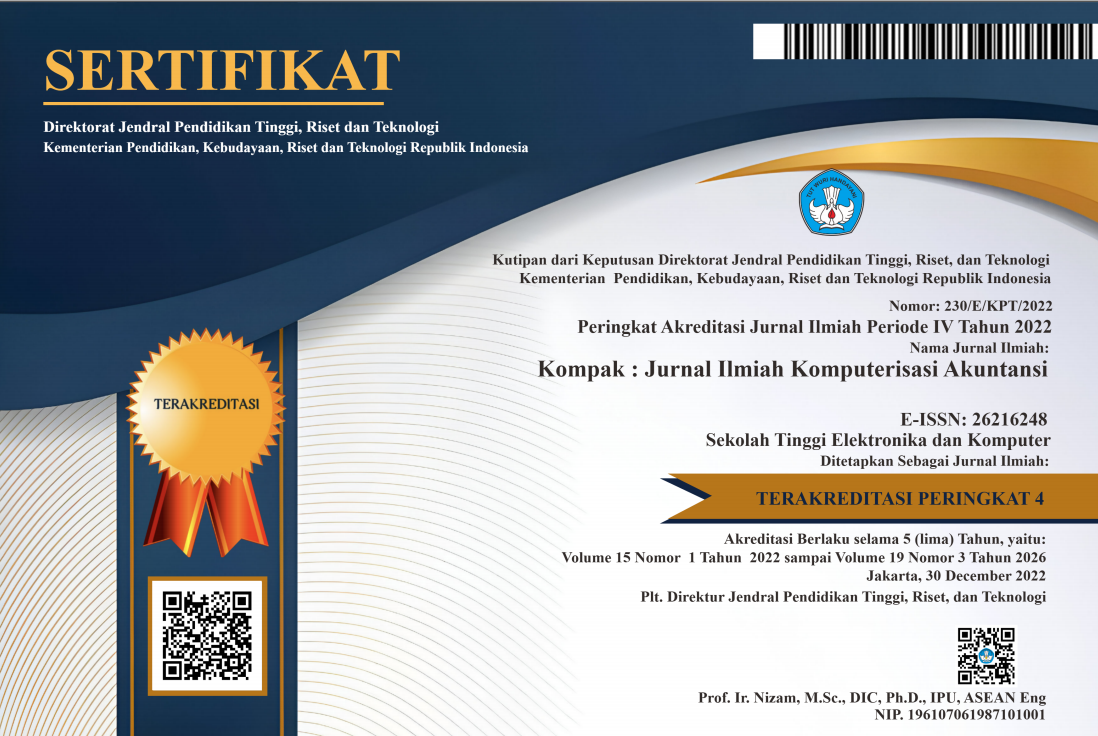ANALISIS PERMASALAHAN PENGANGGURAN DI INDONESIA
DOI:
https://doi.org/10.51903/kompak.v17i1.1866Kata Kunci:
Unemployment, Indonesia, Covid-19, Labor Market, YouthAbstrak
This study aims to identify the factors that influence the unemployment rate and its impact on the economic and social welfare of the community. The research method uses a literature study. The findings show that factors such as inequality in labor supply and demand, government policies that are less pro-people, and population growth are the main causes of high unemployment. Although the government has taken measures, such as the allocation of funds for handling COVID-19 and incentive programs, the decline in unemployment has not been significant. Recommendations include policies that support increased employment, investment in education and skills training, gender inclusion in the workforce, and cooperation between the government, private sector and civil society to create sustainable employment. With these measures, Indonesia is expected to reduce its unemployment rate and create a more stable and inclusive economy.
Referensi
Bachtiar, A. Z. (2019). Analysis of the influence of informal labor, unemployment and education on economic growth in Indonesia. Scientific Journal, (2), 1-2.
Darmawan, A. S., & Mifrahi, M. N. (2022). Analysis of open unemployment rates in Indonesia period before and during the COVID-19 pandemic. Journal of Economic and Financial Policy, 1(1), 111-118.
Delila, V., Alvita, L., Ananda, W. V., Safitri, M., & Rinaldi, M. (2024). The Relationship Between HR Quality and Unemployment and Its Effect on Poverty Levels in North Sumatra 2005-2020 Journal of Economic Studies, 3(1), 44-52.
Fikri, Y. T. A., & Gopar, I. A. (2021). Analysis of Increased Unemployment Rate due to the Impact of Covid Pandemic 19 in Indonesia. Indonesian Journal of Business Analytics (IJBA), 1(2), 107-116.
Hartanto, T. B., & Masjkuri, S. U. (2017). The effect of population, education, minimum wage and gross regional domestic product on the Amount of unemployment in the regency and city of East Java, 2010-2014. JIET (Journal of Applied Economic Sciences), 2(1), 20-29.
Latifa, I., & Personal, F. (2021). The role of nonformal educational institutions in addressing unemployment in the digital age. e-Journal Education Sociology University of Ganesha Education, Department of History, Sociology and Library, 3(3), 137.
Marini, L., & Princess, N. T. (2019). Opportunity to Unemployment in Bengkulu Province: How big? Convergence: The Journal of Economic Development, 1(1), 70-83.
Mukhlason, A., Winanti, T., & Yundra, E. (2020). Analysis of SMK indicators of unemployment in East Java Province. VTE: Journal of Vocational and Technical Education, 02(02), 29–36.
Mukhtar, S., Saptono, A., & Arifin, A. S. (2019). The analysis of the effects of human development index and opened unemployment levels to the poverty in Indonesia. Ecoplan, 2(2), 77-89.
Maulana, D. A. (2018). Analysis of Unemployment, Education, Population Influence in Rural Areas (Case Study on Java Island 2005-2015). Scientific Journal, University of Brawijaya.
Nabila, W. A., & Nawawi, Z. M. (2023). Analysis of open unemployment data in Medan City in 2019-2020. VISA: Journal of Visions and Ideas, 3(3), 226-231















.png)



